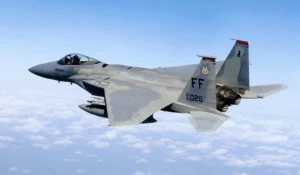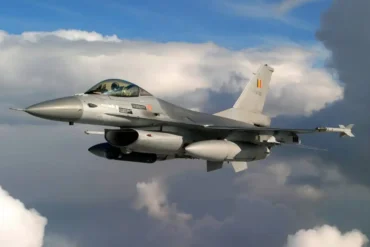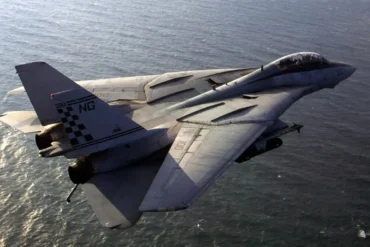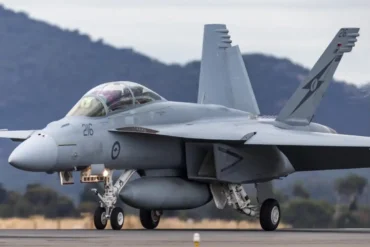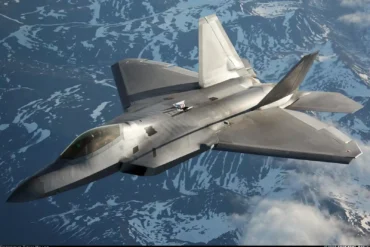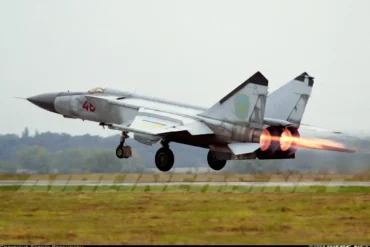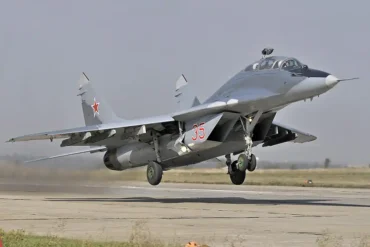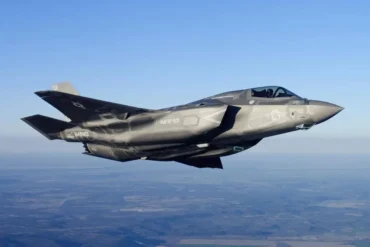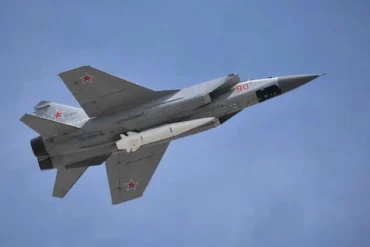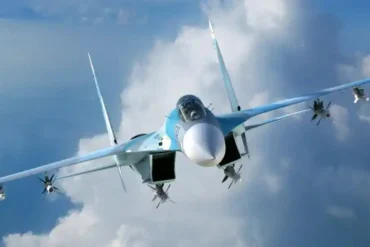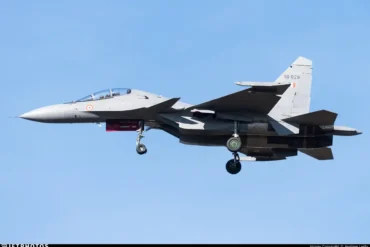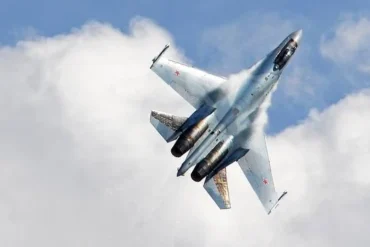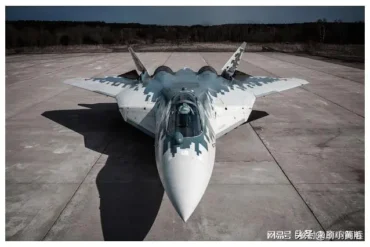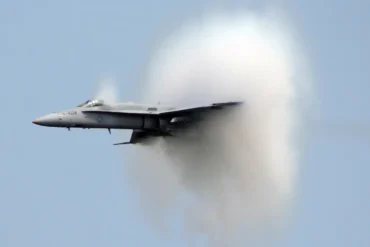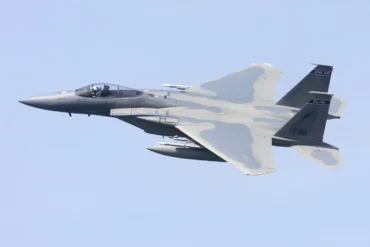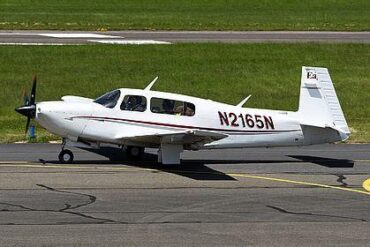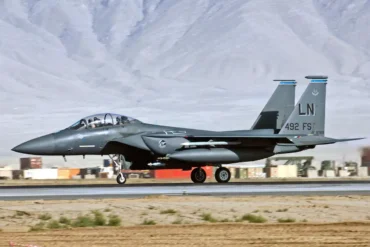The F-15 Eagle, a name synonymous with unmatched aerial superiority, is one of the most iconic fighter jets in the history of modern aviation. Designed during the height of the Cold War, the F-15 has evolved from a basic air superiority fighter to a multi-role, high-performance platform that continues to define air combat even decades after its initial introduction. This article delves into some of the most fascinating facts about the F-15, showcasing its unparalleled capabilities, remarkable feats, and the innovations that make it a cornerstone of air forces around the world.
The First and Only Aircraft to Shoot Down a Satellite
One of the most extraordinary achievements in the F-15’s storied career came in the mid-1980s when it was used to destroy a satellite. The United States Air Force (USAF) conducted an anti-satellite (ASAT) test using the F-15 as a high-altitude launching point for a missile designed to target spaceborne objects. The F-15 successfully shot down a satellite, making it the first and only aircraft to achieve this feat. While the ASAT program was eventually discontinued, the F-15’s role in this mission underscored its versatility and the incredible engineering behind its design.
Landing with One Wing
Perhaps one of the most awe-inspiring moments in the F-15’s history occurred in 1983, during a routine training flight over Israel. Pilot Zivi Nedivi was involved in a midair collision that severed the right wing of his F-15. Despite the significant damage, the aircraft remained remarkably stable, allowing Nedivi to land the plane safely. Incredibly, he didn’t realize that his wing had been completely torn off until after touching down. This event demonstrated the F-15’s incredible engineering resilience, proving that it could still perform under the most extreme conditions.
A Cold War Response to the MiG-25
The F-15 was conceived as a direct counter to the Soviet Union’s MiG-25, an aircraft that, while impressive in its raw speed and altitude capabilities, lacked agility and maneuverability in combat. The MiG-25 was often described as a “Potemkin” fighter: fast, but not necessarily a well-rounded adversary in air-to-air combat. The U.S. military, concerned about the threat the MiG-25 posed, fast-tracked the development of the F-15 to outclass it. The result was an air superiority fighter that combined exceptional speed with superior maneuverability, marking a critical turning point in Cold War aerial combat.
Impressive Payload Capacity
The F-15 has long been regarded as a fighter with exceptional payload capacity. The F-15EX model, for example, can carry up to 16 missiles—with the theoretical potential to mount 22—making it a formidable weapon in both air-to-air and air-to-ground engagements. This unparalleled firepower places the F-15 in a unique position within the fighter jet community, combining speed, agility, and substantial armament in a single platform. It’s a fighter that doesn’t just excel in one area but dominates in multiple domains.
Unmatched Kill-to-Death Ratio
One of the most impressive statistics associated with the F-15 is its 104:0 kill-to-death ratio. To date, the F-15 has never been shot down in combat, a testament to its design, the skill of its pilots, and the operational tactics employed by the aircraft. This remarkable record also highlights the air superiority the F-15 has maintained in every conflict it has been involved in. Many of the kills made by the F-15 have been against Russian/Soviet-origin aircraft, with the Israeli Air Force (IAF) accounting for a significant portion of these victories.
The F-15’s ability to engage and destroy enemy aircraft with such precision and success can be attributed to its combination of cutting-edge radar systems, highly effective weapons, and its pilots’ extensive training.
Designing the F-15: Beauty Meets Functionality
The F-15 is a fighter that embodies both form and function. With a length of 19 meters, it is as long as a Gundam is tall, which is impressive considering the aircraft’s aerodynamic design. The jet’s distinctive twin tail design, sleek fuselage, and bubble canopy give it a graceful yet menacing appearance. The smooth, wide canopy provides pilots with exceptional visibility, essential for both combat and navigation during high-speed engagements.
Speed and Thrust: The Power of the F-15
The F-15’s engines, powered by two Pratt & Whitney F100 turbofan engines, provide the aircraft with an incredible thrust-to-weight ratio of 1.17:1. This means that the F-15 can easily break the sound barrier and even accelerate in a vertical climb. With a top speed of Mach 2.5, it is one of the fastest fighter jets ever built, capable of rapidly engaging or disengaging from combat situations. Thanks to its powerful engines and aerodynamic design, the F-15 can outperform many modern jets in terms of sheer speed and acceleration.
The F-15’s Resilience: Surviving Extreme Damage
The F-15 has proven time and time again that it is an aircraft that can survive the most extreme circumstances. In addition to the incident in which a pilot landed a plane with only one wing, the F-15 has also managed to land safely despite losing its canopy mid-flight. These incidents highlight the aircraft’s ability to maintain stability and control even when subjected to severe damage, ensuring that pilots can get back home safely in the event of an emergency.
The F-15’s Role in the Modern Battlefield
The F-15E Strike Eagle, a variant designed for multirole missions, brings even more versatility to the table. The F-15E is equipped with advanced ground-sensing radar and infrared units, allowing it to fly at ultra-low altitudes at night while maintaining high speeds. This capability makes it an excellent platform for precision strike missions, even under challenging conditions. The F-15E’s ability to fly at night and deliver payloads with pinpoint accuracy is one of the reasons it remains a vital asset for modern military operations.
A Symbol of Technological Innovation
The F-15 was not just a fighter aircraft but a symbol of technological innovation. Its avionics, radar systems, and weapons delivery mechanisms were groundbreaking at the time of its development and continue to be enhanced through upgrades like the MSIP (Modernization and Structural Improvement Program). The program introduced several key upgrades, including the addition of countermeasures that improved the aircraft’s survivability against modern air defenses.
International Presence: The Global Reach of the F-15
The F-15 has been adopted by numerous countries across the globe, making it an international icon of air combat. Japan, for instance, has over 100 F-15s in its fleet, assembled by Mitsubishi as part of an agreement with the United States. The F-15’s success in other air forces is a testament to its adaptability and global appeal, as the aircraft continues to serve as a cornerstone of air defense for numerous nations.
World Records: An Example of F-15 Excellence
The F-15 has consistently pushed the boundaries of aviation technology and performance. In 1975, the aircraft set a world record by climbing from a standstill to an altitude of nearly 100,000 feet in under three and a half minutes, an achievement that highlights the F-15’s incredible engine power and design. This record is just one of many that illustrate how the F-15 has consistently broken through technological and performance barriers.
A Fighter Jet with a Unique Feature: The TomEagle’s Communication System
The F-15 TomEagle, an advanced variant of the F-15, features a unique communication system that allows pilots to convey which direction they are turning without the need for radio transmission. This system is invaluable in combat situations where maintaining radio silence is critical. The ability to communicate effectively without revealing one’s position gives F-15 pilots a tactical advantage in the heat of battle.
The Eagle’s Future: A Lasting Legacy
Even though the F-15 was initially designed during the Cold War, it has evolved into a fighter jet that is still highly relevant in the modern era of air combat. The introduction of F-15EX variants ensures that this remarkable aircraft will continue to serve well into the 21st century. The combination of advanced avionics, cutting-edge weaponry, and exceptional maneuverability ensures that the F-15 will remain a force to be reckoned with for years to come.
Conclusion: The F-15 Eagle – A Timeless Legend
The F-15 Eagle’s legendary status is well-earned. Whether it’s its remarkable kill-to-death ratio, its ability to land safely after suffering catastrophic damage, or its role as the first aircraft to shoot down a satellite, the F-15 is a fighter that continues to inspire awe and respect in the world of aviation. From its stunning speed and agility to its unmatched versatility, the F-15 remains one of the most influential aircraft ever designed. As it continues to serve the air forces of several nations, the F-15 Eagle’s place in the annals of aviation history is forever secured.
